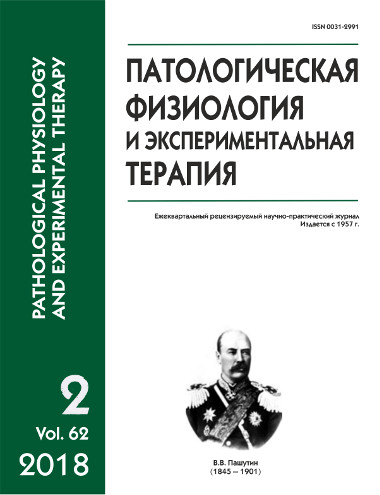Significance of the «youth protein», GDF11, and «aging proteins», CCL11, GDF15, and jam-a, for regulation of blood pressure in healthy and hypertensive women
DOI:
https://doi.org/10.25557/0031-2991.2018.02.46-52Keywords:
GDF11, GDF15, CCL-11, JAM-A; essential hypertension; systolic blood pressure; diastolic blood pressure; mean blood pressureAbstract
The aim of this work was to study the relationship between contents of GDF11, GDF15, CCL11, and JAM-A proteins and blood pressure in healthy women and women with essential hypertension. Methods. The study involved 118 women. Contents of GDF11, GDF15, JAM-A, and CCL11 were measured using the enzyme immunoassay (ELISA). Ratios of the "youth protein” to “aging proteins" (GDF11/GDF15, GDF11/CCL11, and GDF11/JAM-A) were computed. Systolic (SBP) and diastolic (DBP) blood pressure was measured using the Korotkov method. Results. In hypertensive women, the content of the "youth protein", GDF11, was significantly reduced, and concentrations of "aging proteins", GDF15, CCL-11, and the adhesion molecule JAM-A, were increased. Some "youth and aging proteins” were positively or negatively correlated with blood pressure. The greater was the ratio of the "youth protein", GDF11, to "aging proteins", GDF15, CCL-11, and JAM-A, the lower was systolic, diastolic, and mean blood pressure. Therefore, the relationship between the ratio of the "youth protein", GDF11, to "aging proteins", GDF15, CCL11, and JAM-A, plays a substantially greater role in regulation of blood pressure than each of these molecules alone. Conclusion. Systematic use of kinesiotherapeutic courses for 2-3 years restores a normal "youth to aging protein" ratio and improves blood pressure.Downloads
Published
2018-05-31
Issue
Section
Original research
How to Cite
[1]
2018. Significance of the «youth protein», GDF11, and «aging proteins», CCL11, GDF15, and jam-a, for regulation of blood pressure in healthy and hypertensive women. Patologicheskaya Fiziologiya i Eksperimental’naya Terapiya (Pathological physiology and experimental therapy). 62, 2 (May 2018), 46–52. DOI:https://doi.org/10.25557/0031-2991.2018.02.46-52.






